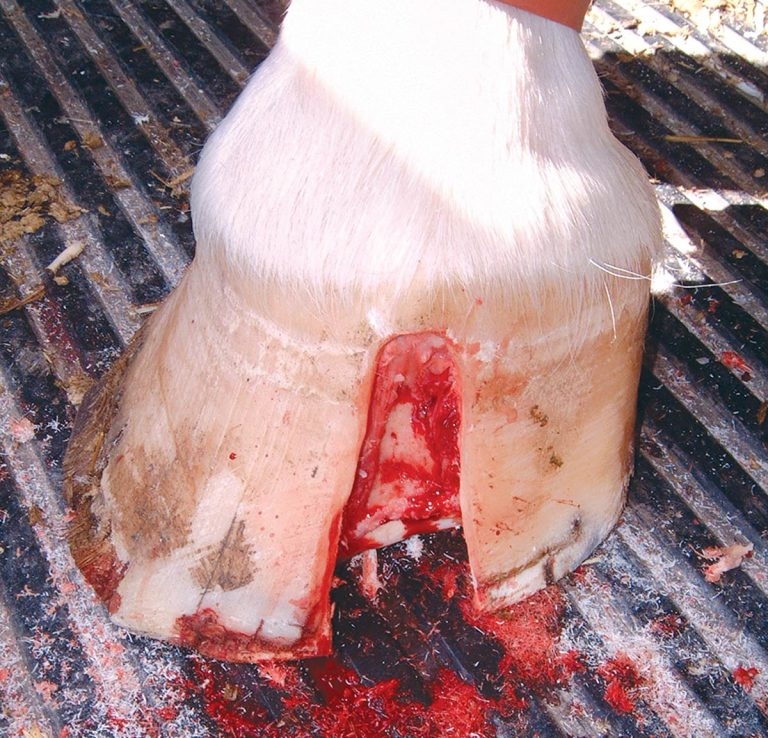22 Aug 2016
Graham Hunter, in the fourth of six reports, discusses how a good working relationship ensures timely veterinary involvement and high standards of patient care.

Figure 1. Keratoma treatment requires farrier assistance.
The nice thing about farriers is, unlike dentists, for example, we are not in competition with them.

Farriers are often passionate and dedicated to their profession, and do not want to be compromised.
So how can we make the most of the relationship with the unique character that is the farrier?
Some will have a predefined view on what vets are like, so it is important we step up and don’t live up to that often poor attitude.
Farriers have frequently spent many years in training and further education, and should be treated with respect for their achievements.
Best practice is the aim and communication is key to achieve this, both with on-site cases as well as coordination with clinic cases.
When resolving lameness cases, no substitute exists for good collaboration between the three parties – vets, farriers and owners. Farriers are often a sentinel for equine foot problems and alerted to many conditions before the vet.
When it comes to angular limb and flexural deformities, the farrier’s role is central in delivering appropriate trimming and a variety of shoes with appropriate extensions for differing deformities, while our role is to provide clinical examinations and radiographic assessments, with collaboration on the latest thinking on treatments.
![]() Laminitis, as we know, is a condition requiring a dedicated approach from the three parties. Particular attention should be made to appropriate physical support in the acute phase, moving on to the physical and radiographic assessment of chronic cases.
Laminitis, as we know, is a condition requiring a dedicated approach from the three parties. Particular attention should be made to appropriate physical support in the acute phase, moving on to the physical and radiographic assessment of chronic cases.
Digital venography can provide valuable case prognosis. Again, the farrier’s role as a sentinel for relapsing in chronic disease is essential.
The farrier is an essential compatriot in the treatment of pedal bone fractures. The making of appropriate rim or multi-
clipped bar shoes, and the use of foot casting, are often required in the treatment of many types of fractures.
Distal limb soft tissue injuries, hoof capsule defect and keratomas (Figure 1) all require farrier assistance. Cases frequently involve the use and making of hospital plates, the use of flexible resins for hoof capsular repairs and the use of rarer metal shoes, such as the swan-necked shoe, fishtail shoe and T-shoe.
Good farriery and veterinary foot care is not always about lameness. Obtaining and retaining good foot balance is key to maintaining a sound working horse. A good working relationship ensures veterinary involvement is timely and appropriate, together ensuring the highest standards for the horses under our care.